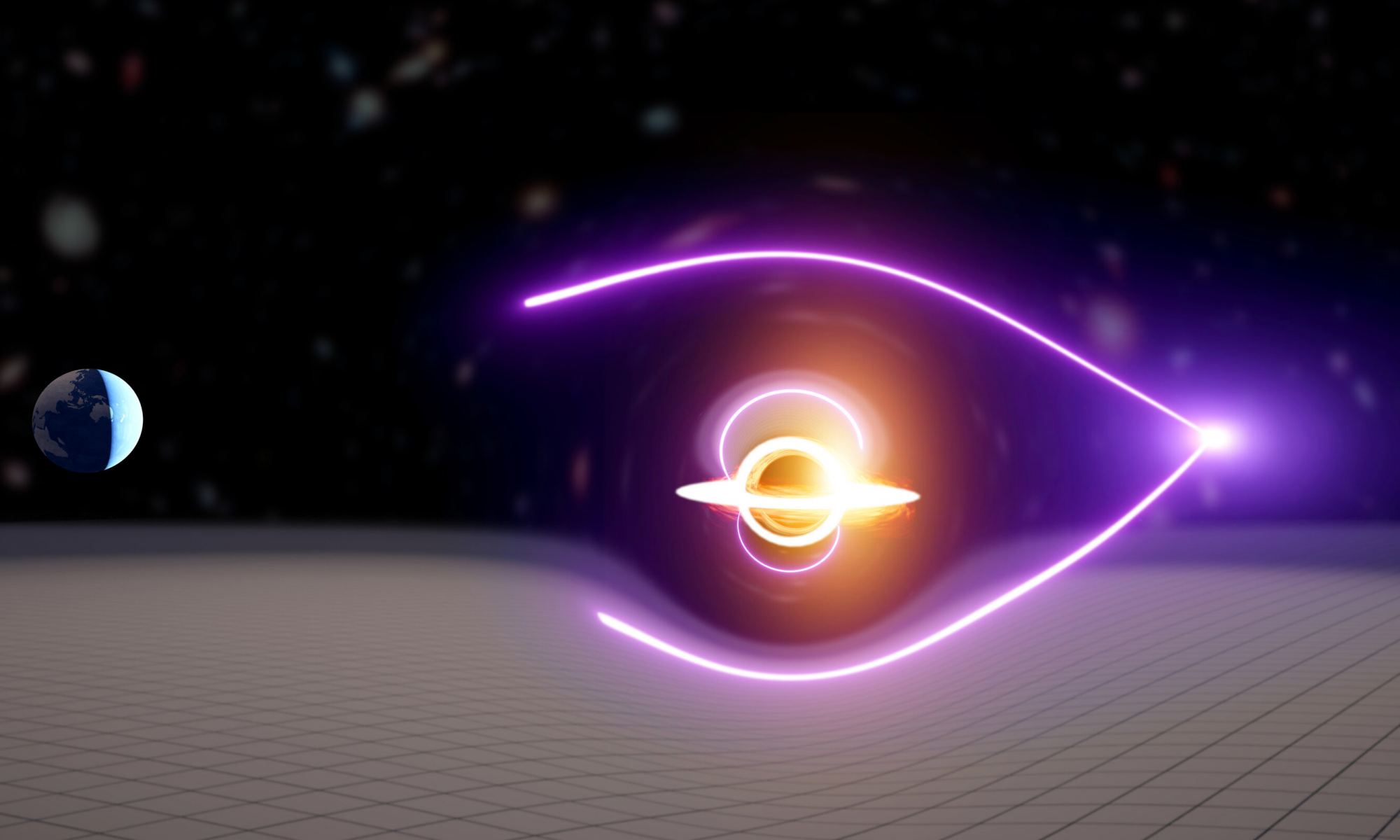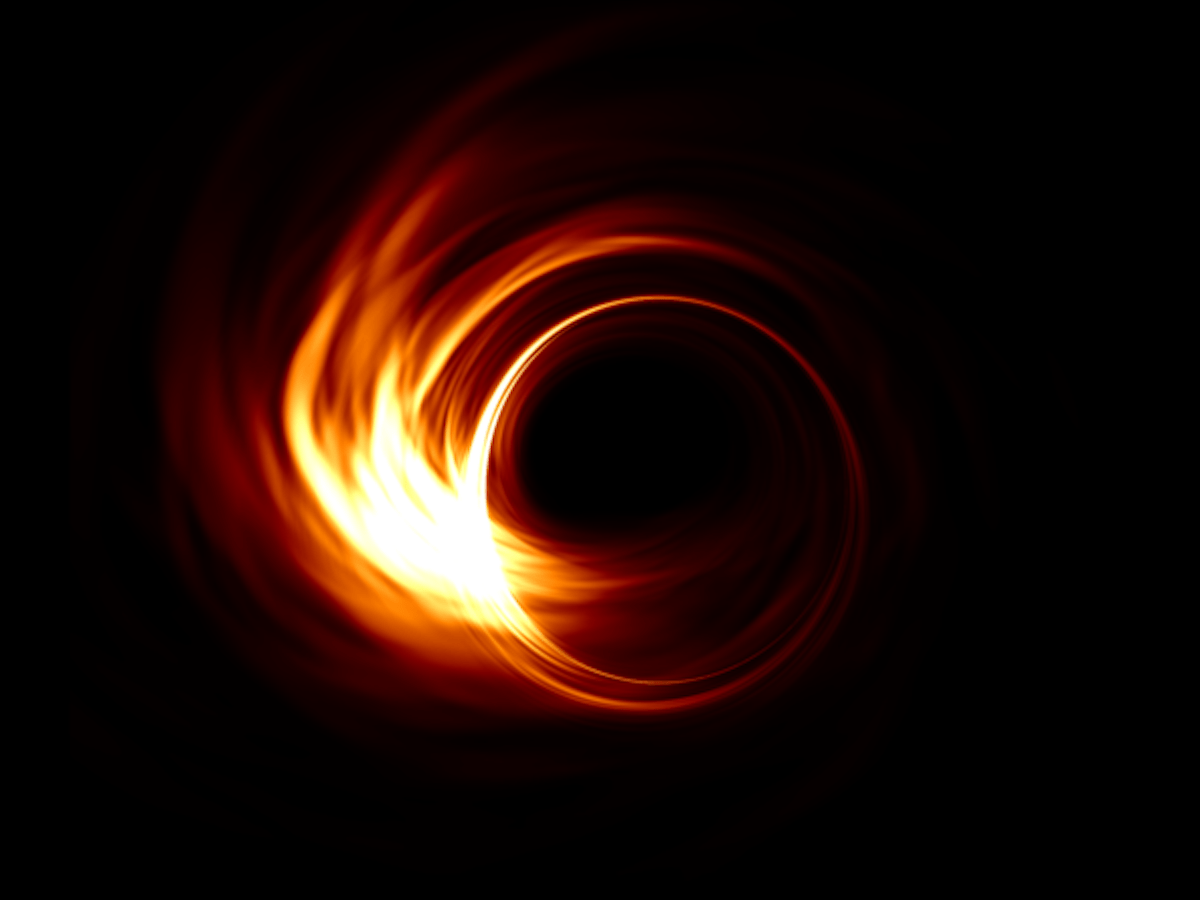Black holes are the most powerful destructive forces in the universe. They can rip apart a star and scatter its ashes out of the galaxy at nearly the speed of light. But these engines of destruction can also pave the way for new stars to form, as a new study in Nature shows.
Continue reading “Black Holes don't Just Destroy, They Also Help With Star Formation”Whether They’re Stellar-Mass or Supermassive, Black Holes Behave Pretty Much the Same Way
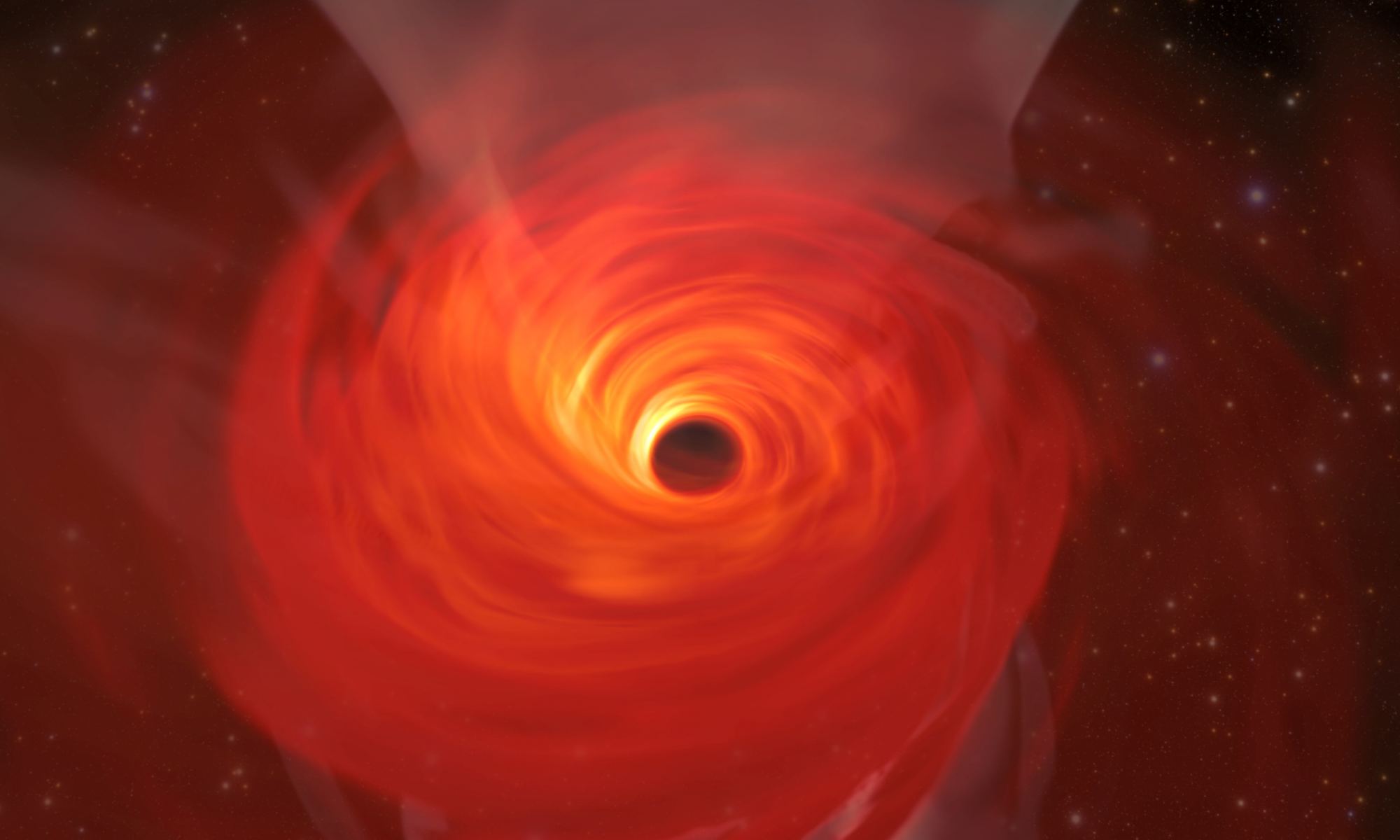
Astronomers recently caught a supermassive black hole gulp down a star. It flared in exactly the same way as its smaller cousins do when those black holes have a snack. It just took longer and was a million times brighter.
Continue reading “Whether They’re Stellar-Mass or Supermassive, Black Holes Behave Pretty Much the Same Way”Scientist sees deep meaning in black holes after Event Horizon Telescope’s triumph
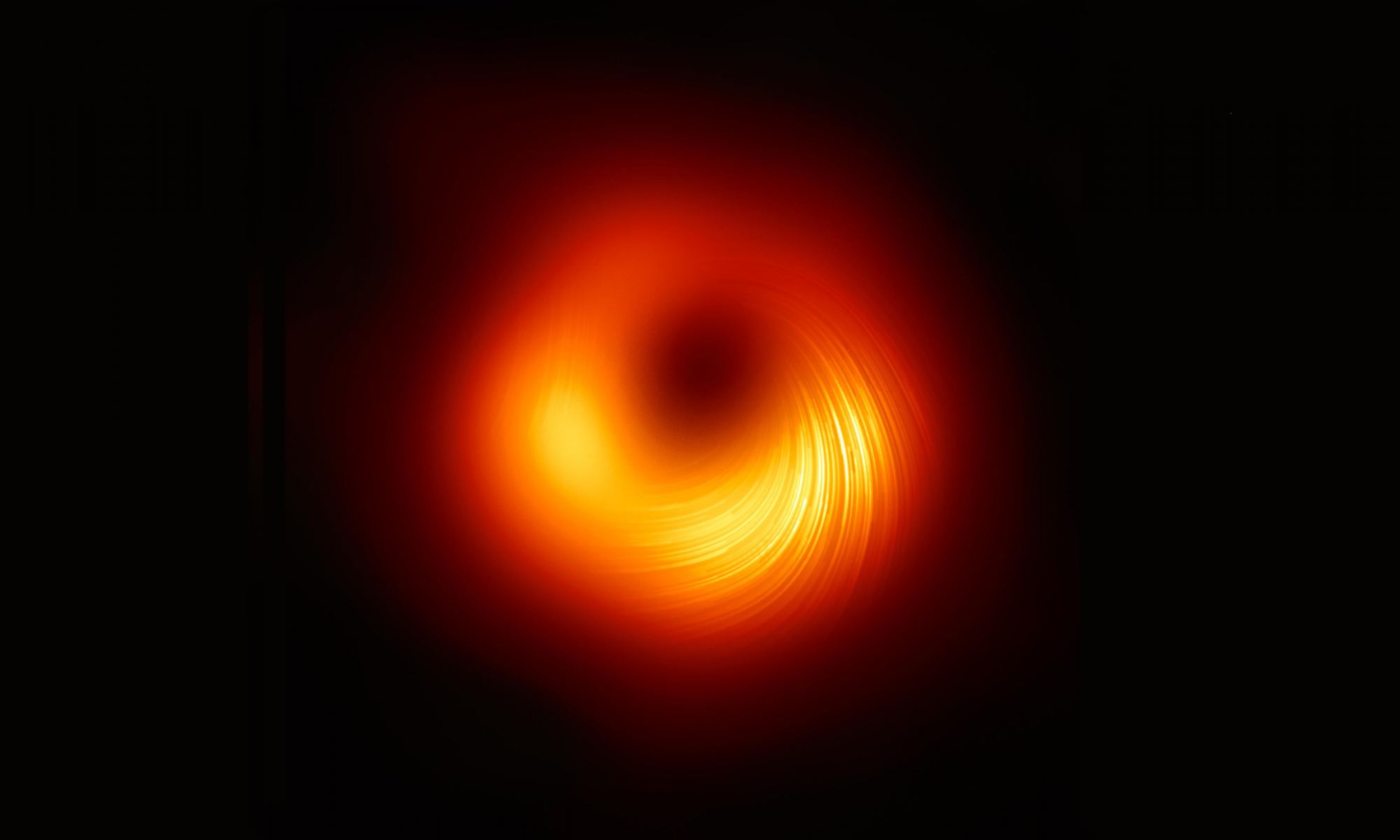
Why are black holes so alluring?
You could cite plenty of reasons: They’re matter-gobbling monsters, making them the perfect plot device for a Disney movie. They warp spacetime, demonstrating weird implications of general relativity. They’re so massive that inside a boundary known as the event horizon, nothing — not even light — can escape its gravitational grip.
But perhaps the most intriguing feature of black holes is their sheer mystery. Because of the rules of relativity, no one can report what happens inside the boundaries of a black hole.
“We could experience all the crazy stuff that’s going on inside a black hole, but we’d never be able to tell anybody,” radio astronomer Heino Falcke said. “We want to know what’s going on there, but we can’t.”
Falcke and his colleagues in the international Event Horizon Telescope project lifted the veil just a bit two years ago when they released the first picture ever taken of a supermassive black hole’s shadow. But the enduring mystery is a major theme in Falcke’s new book about the EHT quest, “Light in the Darkness: Black Holes, the Universe, and Us” — and in the latest installment of the Fiction Science podcast, which focuses on the intersection of fact and science fiction.
Continue reading “Scientist sees deep meaning in black holes after Event Horizon Telescope’s triumph”What Comes After Photographing a Black Hole's Event Horizon? Could we see the Photon Ring?
In 2019 the Event Horizon Telescope (EHT) gave us the first direct image of a black hole. On one hand, the image it produced was rather unimpressive. Just a circular blur of light surrounding a dark central region. On the other hand, subtle characteristics of the image hold tremendous information about the size and rotation of the black hole. Most of the details of the black hole image are blurred by the limits of the EHT. But the next generation EHT should provide a sharper view, and could reveal the dark edge of a black hole’s event horizon.
Continue reading “What Comes After Photographing a Black Hole's Event Horizon? Could we see the Photon Ring?”Are we Seeing a Star That Just got Spaghettified?
Sometimes astronomers come up with awesome names for certain phenomena and then feel like they can’t use them in formal scientific contexts. Tidal Disruption Events (TDEs) are one of those – colloquially they are known as “spaghettifications” where a star is pulled apart until its constituent matter looks like a string of spaghetti.
Astronomers have long known of this process, which takes place when a star gets too close to a black hole, but most of that knowledge has come through studying radiation bursts emitted by the blackhole as it devoured the star. Now, a team led by Giacomo Cannizzaro and Peter Jonker from SRON, the Netherlands Institute for Space Research, and Radboud University now think they have captured the first glimpses of a star actively being spaghettified around the pole of a black hole.
Continue reading “Are we Seeing a Star That Just got Spaghettified?”Smallest, Closest Black Hole Ever Discovered is Only 1,500 Light-Years Away
In theory, a black hole is easy to make. Simply take a lump of matter, squeeze it into a sphere with a radius smaller than the Schwarzschild radius, and poof! You have a black hole. In practice, things aren’t so easy. When you squeeze matter, it pushes back, so it takes a star’s worth of weight to squeeze hard enough. Because of this, it’s generally thought that even the smallest black holes must be at least 5 solar masses in size. But a recent study shows the lower bound might be even smaller.
Continue reading “Smallest, Closest Black Hole Ever Discovered is Only 1,500 Light-Years Away”Roman Space Telescope Will Also Find Rogue Black Holes
In the past we’ve reported about how the Roman Space Telescope is going to potentially be able to detect hundreds of thousands of exoplanets using a technique known as “microlensing”. Exoplanets won’t be the only things it can find with this technique though – it should be able to find solitary black holes as well.
Continue reading “Roman Space Telescope Will Also Find Rogue Black Holes”You Thought Black Hole Event Horizons Looked Strange. Check out Binary Black Hole Event Horizons
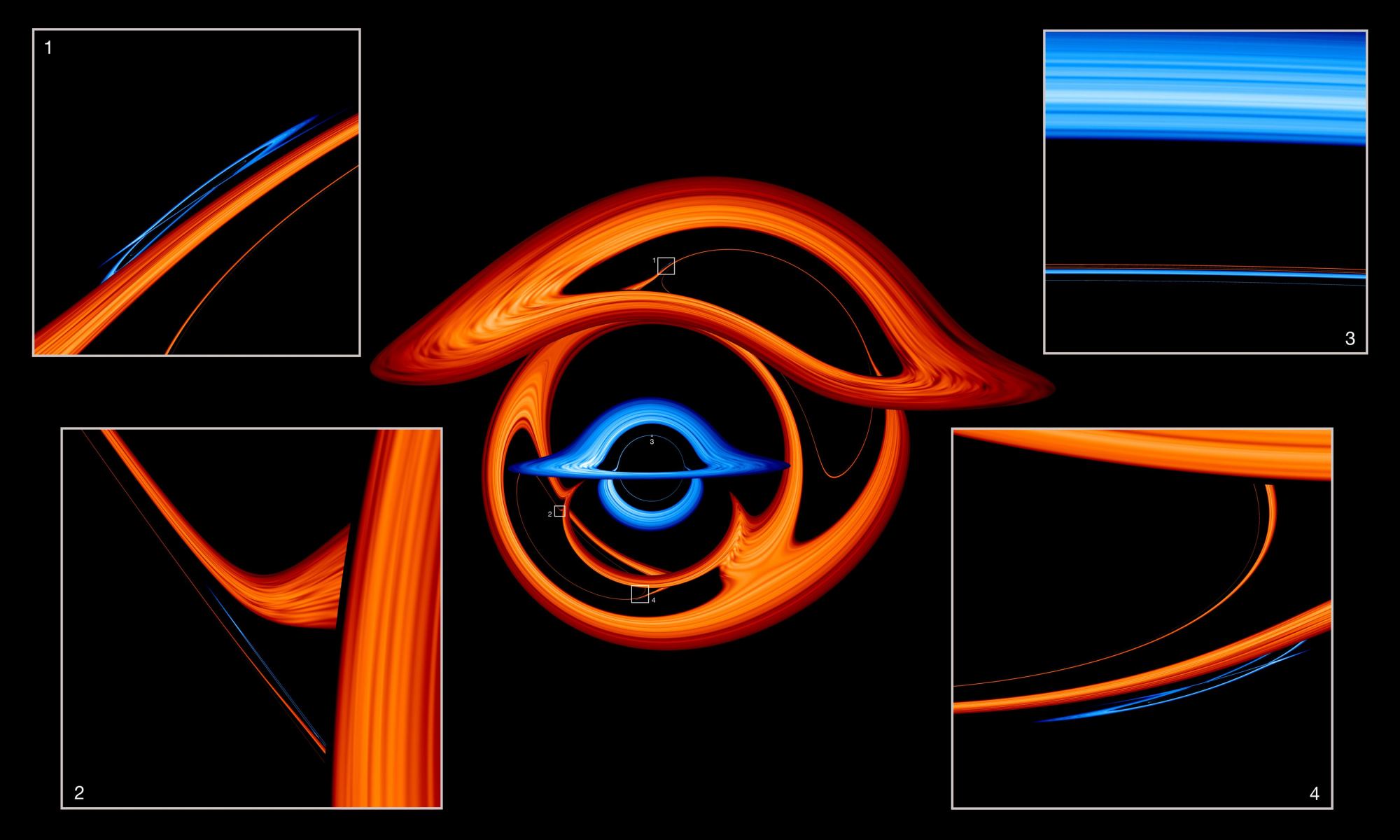
One of the strangest predictions of general relativity is that gravity can deflect the path of light. The effect was first observed by Arthur Eddington in 1919. While the bending effect of the Sun is small, near a black hole light deflection can be significant. So significant that you need a powerful supercomputer to calculate how light will behave.
Continue reading “You Thought Black Hole Event Horizons Looked Strange. Check out Binary Black Hole Event Horizons”An Intermediate-Mass Black Hole Discovered Through the Gravitational Lensing of a Gamma-ray Burst
Black holes come in three sizes: small, medium, and large. Small black holes are of stellar mass. They form when a large star collapses at the end of its life. Large black holes lurk in the centers of galaxies and are millions or billions of solar masses. Middle-sized black holes are those between 100 to 100,000 solar masses. They are known as Intermediate Mass Black Holes (IMBHs), and they are the kind we least understand.
Continue reading “An Intermediate-Mass Black Hole Discovered Through the Gravitational Lensing of a Gamma-ray Burst”The Event Horizon Telescope has Revealed the Magnetic Field Lines Around M87's Central Black Hole
In 2019 astronomers captured the first direct image of a black hole. It was an image of the supermassive black hole at the heart of M87. And when many folks saw it, their reaction was “that’s it?” Which is understandable, given that the image is just a blurry, donut-shaped smudge. It isn’t much to look at. But an astronomical image is a small fraction of the data gathered by astronomers. Recently more of that data has been analyzed, including both the polarization of the light and the magnetic field surrounding the black hole.
Continue reading “The Event Horizon Telescope has Revealed the Magnetic Field Lines Around M87's Central Black Hole”





